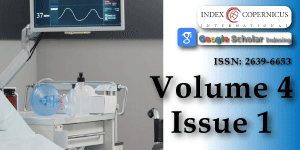Acute pneumonia: Facts and realities against etiological hypotheses and beliefs
Main Article Content
Abstract
Modern AP concepts are focused exclusively on the infectious nature of the disease and the presence of certain pathogens. This belief determines the principles of treatment, the lack of effectiveness of which remains a concern of health professionals. The article presents a fragment of the study devoted to the etiology of АP. 994 children aged 4 months to 14 years with various forms of so-called community-acquired pneumonia were examined and treated. Bacteriological examination of the material from the inflammation zone was carried out in 542 patients. Experiments on modeling АP and its pleural complications were performed on 44 animals. The obtained results and critical analysis of the literature data and scientific facts allow us to consider bacteria only as one of the etiological elements of АP, which is not mandatory in all cases of the disease. Scientifically based revision of existing ideas about the causes and mechanisms of AP development leads to the need for a radical change in the principles of treatment and is a strategic direction in solving the problem.
Article Details
Copyright (c) 2019 Igor K.

This work is licensed under a Creative Commons Attribution 4.0 International License.
Ruuskanen O, Lahti E, Jennings LC, Murdoch DR. Viral pneumonia. Lancet. 2011; 377 (9773): 1264–1275. Ref.: https://goo.gl/tSjiXj
Singh V, Aneja S. Pneumonia - management in the developing world. Paediatric Respiratory Reviews. 2011; 12: 52–59. Ref.: https://goo.gl/AsLKEr
Weiss AJ, Wier LM, Stocks C, Blanchard J.Overview of Emergency Department Visits in the United States, 2011. HCUP Statistical Brief #174. 2006; Ref.: https://goo.gl/pUC3HB
Lim WS, Baudouin SV, George RC, Hill AT, Jamieson C, et al. BTS guidelines for the management of community acquired pneumonia in adults: update 2009. Thorax. 2009; 64 (Suppl 3): iii1–55. Ref.: https://goo.gl/2rrbTf
Lodha R, Kabra SK, Pandey RM. Antibiotics for community-acquired pneumonia in children. Cochrane Database Syst Rev. 2013; 6: CD004874. Ref.: https://goo.gl/BFs6j5
Ref.: https://goo.gl/mNbU4t
Nair GB, Niederman MS. Community-acquired pneumonia: an unfinished battle. Med Clin North Am. 2011; 95: 1143–1161. Ref.: https://goo.gl/tVSySy
Elemraid MA, Thomas MF, Blain AP, Rushton SP, Spencer DA, et al. Risk factors for the development of pleural empyema in children. Pediatr Pulmonol. 2015; 50: 721–726. Ref.: https://goo.gl/HEVcVL
Klepikov I, Rikov V. A method for modeling parapneumonic pleurisy. Author’s certificate for invention. 1990; SU, No 1631574. A1.
Klepikov I. Acute pneumonia and its purulent and destructive complications in children in the midst of a major industrial centre of Western Siberia. Dissertation for the degree of doctor of medical science. Leningrad. 1989;
Ref.: https://goo.gl/wBGPyZ
Jain S, Williams D, Arnold SR, Ampofo K, Bramley AM, et al. Community-Acquired Pneumonia Requiring Hospitalization among US Children. N Engl J Med. 2015; 372: 835-845. Ref.: https://goo.gl/4pqP83
Mani CS, Murray DL. Acute Pneumonia and Its Complications. Part II: Clinical Syndromes and Cardinal Features of Infectious Diseases: Approach to Diagnosis and Initial Management. SECTION D: Lower Respiratory Tract Infections. In the book: SS Long, LK Pickering, CG Prober. Principles and Practice of pediatric infectious diseases. Edinburgh, New York: Elsevier Churchill Livingstone. 2012; 235-245.
Davis CP. Normal Flora. In: Baron S, editor. Medical Microbiology. 4th edition. Galveston (TX): University of Texas Medical Branch at Galveston; 1996. Chapter 6. Ref.: https://goo.gl/mhkfCX
Ref.: https://goo.gl/6LA35S
Li ST, Tancredi DJ. Empyema Hospitalizations Increased in US Children Despite Pneumococcal Conjugate Vaccine. Pediatrics. 2010: 125: 26-33. Ref.: https://goo.gl/aPX2JW
Strachan RE, Snelling TL, Jaffé A Increased paediatric hospitalizations for empyema in Australia after introduction of the 7-valent pneumococcal conjugate vaccine. Bull World Health Organ. 2013; 91: 167-173. Ref.: https://goo.gl/MXTYqQ
Prina E, Ranzani OT, Torres A. Community-acquired pneumonia. Lancet. 2015; 386 (9998): 1097-108. Ref.: https://goo.gl/hQgEjR
Igor Klepikov. Acute pneumonia: a new look at the old problem. Lambert Academic Publishing. 2017; ISBN (978-3- 330-35250-6). Ref.: https://goo.gl/9G1UHA

